Brushing Techniques
Posted June 28, 2022 by Anusha ‐ 2 min read
Brushing teeth is very essential to maintain good oral health because it prevents the accumulation of plaque in different areas of the oral cavity which is the main culprit in the cause of different teeth and gum problems. According to ADA(American Dental Association) recommendation - Brush your teeth twice daily with a soft-bristled brush - Replace your brush every 3 to 4 months or prior if the bristles are frayed off - Make sure to use ADA-specified fluoride toothpaste.
Types Of Brushing Techniques
- The bass or sulcus cleaning method
- Modified bass method
- Stillman’s method
- Charter’s method
- Fone’s or circular or scrub method
- Vertical or Leonard’s method
Bass Method
- Bristles of the brush are placed at 45 degrees angle to the gum and moved in small circular motions
- Strokes are repeated 20 times, 3 teeth at a time
- On the lingual aspect of the anterior teeth, the brush is inserted vertically and the heel of the brush is pressed into the sulcus
- Bristles are then activated
- Occlusal surfaces are cleaned by pressing the bristles firmly on the pit and fissures and then activating the bristles
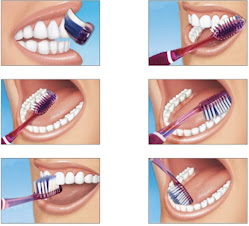
Modified Bass Method
- This technique combines the vibratory and circular methods of the Bass method along with the roll method
- Bristles are gently vibrated by moving the handle of the brush in back and forth movement
- The bristles are then swept over the sides of teeth towards their occlusal surface in a single motion
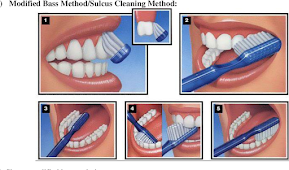
Stillman’s Method
- The bristles are pointed apically with the oblique angle to the long axis of the teeth
- The bristles are placed partially on the cervical aspect and partially on the adjacent gingiva
- The bristles are activated by back and forth movements and simultaneously in the coronal direction
- 20 strokes are applied and the process is repeated on the adjacent teeth
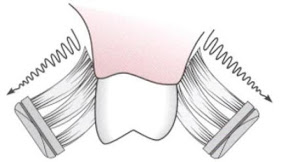
Fone’s Or Circular Method
- This is mainly used for children’s
- In this technique, the child is asked to draw big circles inside the mouth covering both teeth and gingiva simultaneously
- The process is repeated until all the teeth are covered
- This is the easiest method among all the brushing techniques
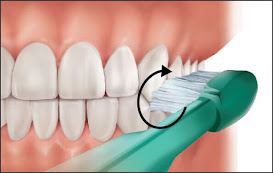
Vertical Or Leonard’s Method
- The bristles are placed at 90 degrees to the facial surface of the teeth
- With the teeth placed edge to edge place the bristles right angle to the long axis of the teeth
- Brush vigorously mostly in up and down methods with gentle pressure
- The teeth are placed edge to edge to keep the brush sliding over the incisal and occlusal surface of the teeth
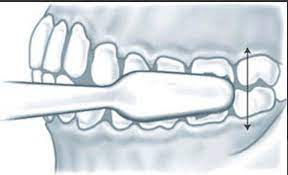
Charter’s Method

- A soft or medium multi-tufted brush is indicated for this technique
- Bristles are placed at an angle of 45 degrees to the gingiva with bristles placed coronally
- Bristles are activated by mild vibratory motion with the bristle ends lying interproximally